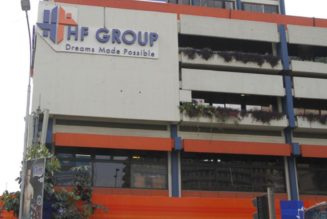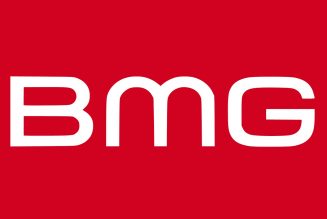Food & Drinks
26 French wine firms woo new Kenyan drinkers
Wednesday June 28 2023
Champagne Prestige des sacres brands on display during the Tastin’ France event at the French Embassy Residence on June 20, 2023. PHOTO | LUCY WANJIRU | NMG
Wine has been more valuable to Kenyans than we might imagine. Over the past years, wine varieties have increased, and so have the stockists and drinkers.
To tap into this new growing market, 26 wine producers from France pitched a tent in Nairobi. The Tastin’ France event held at the French Embassy showcased over 200 different wines, spirits, and champagnes.
“This is my first time here. Africa will be one of the biggest wine markets in the future and from what I have gathered, Kenya will be one of those important markets in the continent. I hope that we will get a good importer to ferry our product here,” said Thomas Navarre, the export manager for Chateau Rousselle, a winery estate located just 45 minutes from Bordeaux, with over 26,000 hectares of vines.
The winery has been in existence since 1636.
“We produce 157,000 bottles a year of light and complex wines, then we have some of our top wines of very good quality. The majority of our wines are made with the idea of drinking while dining and are best paired with red meat. For most of our variety of wines depending on the vines, we no longer age them in oak barrels. So this makes the wine lighter, and fruity, making it an everyday anytime drink,” said the 25-year-old, who is part of a multi-generational vintner.
Because of not ageing in barrels, it takes the estate a month to produce most of its wines, with vinification or winemaking being the only complex process.
For some red wines, the ageing period in the oaks is 18 months.
Cyril Noel, another wine exporter was also exhibiting his wines, particularly to importers, wine merchants, restaurant owners, supermarket retailers, and distributors.
It was his first time in Kenya too. Mr Noel’s family has been producing wines since 1800, he is the eighth generation and manager of the Chateau Tour Saint Germain estate, managing it together with his father Deny Noel.
Chatean Tour Saint-Germain Gerant Owner Cyril Noel showcases their variety of wines during the Tastin’ France event at the French Embassy Residence on June 20, 2023. PHOTO | LUCY WANJIRU | NMG
“Our family bought the estate in 1891. In 1930, because of inheritance, the estate was shared between my father’s grandmother and her brother. In 2012, after several purchases, my father and I succeeded in regrouping the plots into one estate again,” said the 44-year-old.
Chateau Tour Saint Germain is also located in the north along the right bank of the estuary on the sunny hillsides with the vineyard stretching over 70 hectares.
“We produce 400,000 bottles a year which we sell in Europe, mainly Belgium, Italy, Switzerland, and the US, China and now I am here because I want to also dig my share in Africa,” a confident Mr Noel said.
From his research, Mr Noel added that he had discovered that Kenya is still a young market as far as French wine was concerned and that provided a good opportunity for his winery.
“The middle class in Kenya is rising and that means they can afford a good bottle of wine. Probably my wholesale price in Kenya before tax would range between 18 to 40 Euros (Sh2,772 – Sh6,160) depending on the wine.
Caves De Rauzan show case their variety of champagne during the Tastin’ France event at the French Embassy Residence on June 20, 2023. PHOTO | LUCY WANJIRU | NMG
Thanks to the proximity of the estuary, the over-25-year-old vineyard benefits from a temperate climate, sufficiently rainy and mild in winter.
“Because of these conditions compounded with clay-limestone, clay-silica and clay-gravel type of soil, 75 percent of our grape variety are Merlot, the Cabernet Sauvignon 15 percent and the Malbec 10 percent,” he said.
Wine production is a meticulous process.
“There is maceration and fermentation to facilitate extraction of tannins and anthocyanin. There is vatting [crushing the grapes] which is a long process of about 30 days. The ageing which lasts between 18 and 24 months gives nature sufficient time to make its work and get a natural wine,” he explained.
After this process, a selection of their best wines continues with ageing in the French oak barrels from December following the harvest and for one year before bottling.
“We mainly produce red wine, the Blaye Cotes de Bordeaux. We have Merlots. The Malbec adds complexity. Depending on the vintage these red wines can be preserved for 10 to 15 years,” Mr Noel added.
French brands and appellations have become popular with the middle and upper classes. France is the fourth largest exporter of alcoholic beverages to Kenya; and it is second largest exporter of wines with a seven percent market share that is still growing, said Lucille Clement, of Business France, a French national agency that helps international growth of French companies and promotes international investments in France.
Two years ago, 19 French wine and spirits producers and merchants from the main wine regions of France: Bordeaux, Champagne, Cognac, Rhone Valley, Loire Valley, and Languedoc– Roussillon were in Nairobi to showcase and give Kenyans a taste of over 200 wines and spirits, and scout for partnerships.
“In as much as Kenya produces a majority of its spirits and beers, wine production remains marginal as most of this product is mainly imported from other markets such as South Africa, Chile, and Italy. France’s exports to Kenya stood at above $1.4 million (Sh197 million) as of 2021 and the conditions look favourable for increased volumes (up to 9 percent) between now and 2025,” she said.
Another exhibitor was Celine Clarac. Currently, distributing in 40 countries, Ms Clarac, director of sales at Caves De Rauzan was looking to expand its market portfolio in Kenya as well.
Caves De Rauzan is a group of three winegrowers – Grangeneuve Cooperative Cellar, Cooperative Cellar of Nerigean and Cooperative of Rauzan – who merged into one.
The company, which is also located in Bordeaux, boasts a turnover of 27 million Euros (Sh4.1 billion) in sales from its 4,000 hectares of vineyards producing about 200,000 hectoliters of wine every year.
Caves De Rauzan Director of Sales Celine Clarac showcases their variety of wines during the Tastin’ France event at the French Embassy Residence on June 20, 2023. PHOTO | LUCY WANJIRU | NMG
They produce wines that Ms Clarac described as ‘not arrogant.’
“Because of the soil climate of our region, our blend is more Merlot and Cabernet. We focus more on the production of light wines because we want to have easy-to-drink wines, very accessible wines, not arrogant. Half of our wines are aged in stainless steel tanks. The result is a wine that is light, fresh, fruity and crisp because there is no exchange between the wine and the stainless steel. This explains why our wines are an everyday drink, you could drink it as an aperitif (appetizer),” Ms Clarac said.
Even when aged in stainless steel barrels, the wine remains fruit-forward even as they age allowing anyone to enjoy the talents of the winemaker.
For the few bottles of complex wines produced by Caves, they are aged in French or American oak barrels.
French oak barrels are much more tightly-grained and less dense than the American. As such French oak imparts subtler flavours and firmer but silkier tannins. In the world of wines, French oak flavours are considered to be savoury.
The best part of the day was the champagne tasting. I landed on the Lombard Champagne House, Export Manager’s table.
What fascinated me was not how luxurious the Champagne Lombard bottles looked lying on the kitchen craft acrylic cooler, but rather how Slyvain Dufermon, the export manager, read the bottles.
The champagne wine labels were rather exquisite. He had a three-paged label sticker with every possible detail you would need to know about a particular champagne.
Page one documented the type of grapes used, the type of soil, the temperature of production and maturity age. Page two gave an in-depth analysis characteristics of the champagne and what notes to expect and acidity once you pop up the bottle.
The last page offered a map of the region where the grapes were picked from with the exact region highlighted in red.
“This is how we stay ahead of the pack, we want to make it easy for the client to choose by knowing and understanding every detail of what we are offering without second-guessing,” said Mr Dufermon with a cheeky laugh.
He works for the Lombards. Thomas Lombard is the current CEO of the estate, the fourth generation has inherited from his father Thierry who now sits on the supervisory board. Thierry led the Champagne House having succeeded his father Phillippe.
Chateau Rousselle Export Manager Thomas Navarre showcases their variety of wines during the Tastin’ France event at the French Embassy Residence on June 20, 2023. PHOTO | LUCY WANJIRU | NMG
The house was founded by Robert Andrieu, Thomas’ great grandfather in 1925. The Lombards own 10 hectares of vines and then source from about 70 hectares.
“We are pretty much into buying grapes. I must say what is important is that we do that very carefully with people who we know, how they work and so for us it’s not about sourcing grapes from everybody because at the end of all the purpose is to single village cuvee, single plot and so we need good quality grapes if we want to make quality champagne.
The Champagne House produces over 13 varieties. The wines dedicated to Extra Brut, are matured for at least three years while those dedicated to Brut Nature, are matured for at least four years maximum of five years.
“When you see Brut on the label it means you have between 6-12 grams of sugar in our bottle and when it’s Extra Brut that is between 1-5 grams of sugar and Brut Nature means the champagne is dry with no sugar,” he said.
To focus on quality, the Champagne house scaled down mass production.
Champagne Lombard brands on display during the Tastin’ France event at the French Embassy Residence on June 20, 2023. PHOTO | LUCY WANJIRU | NMG
“In the past, we were producing around 2-2.5 million bottles now we only produce 300,000 bottles,”
Once the Champagne House starts exporting its Brut to Kenya, the starting price of at least a bottle will be approximately 113 dollars (Sh16,000).









